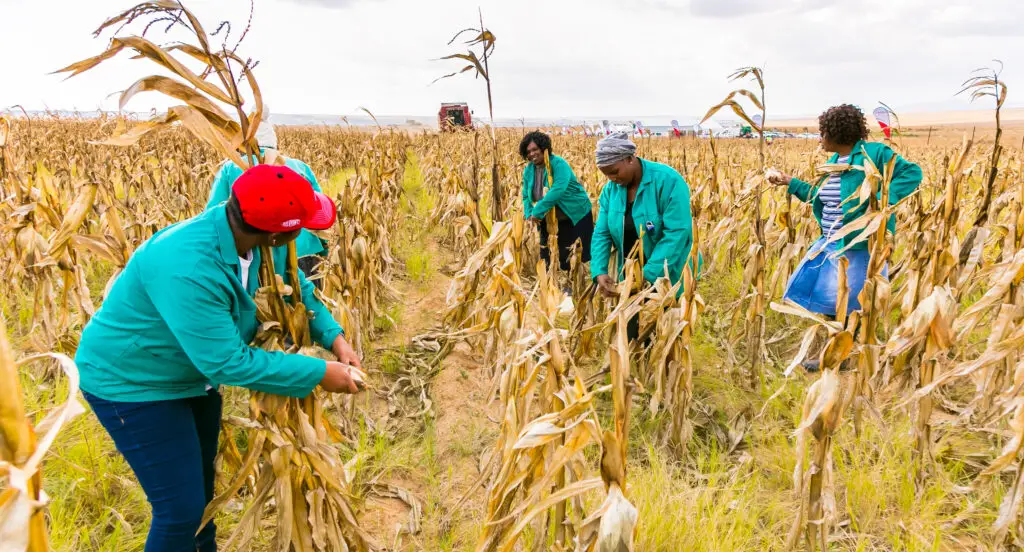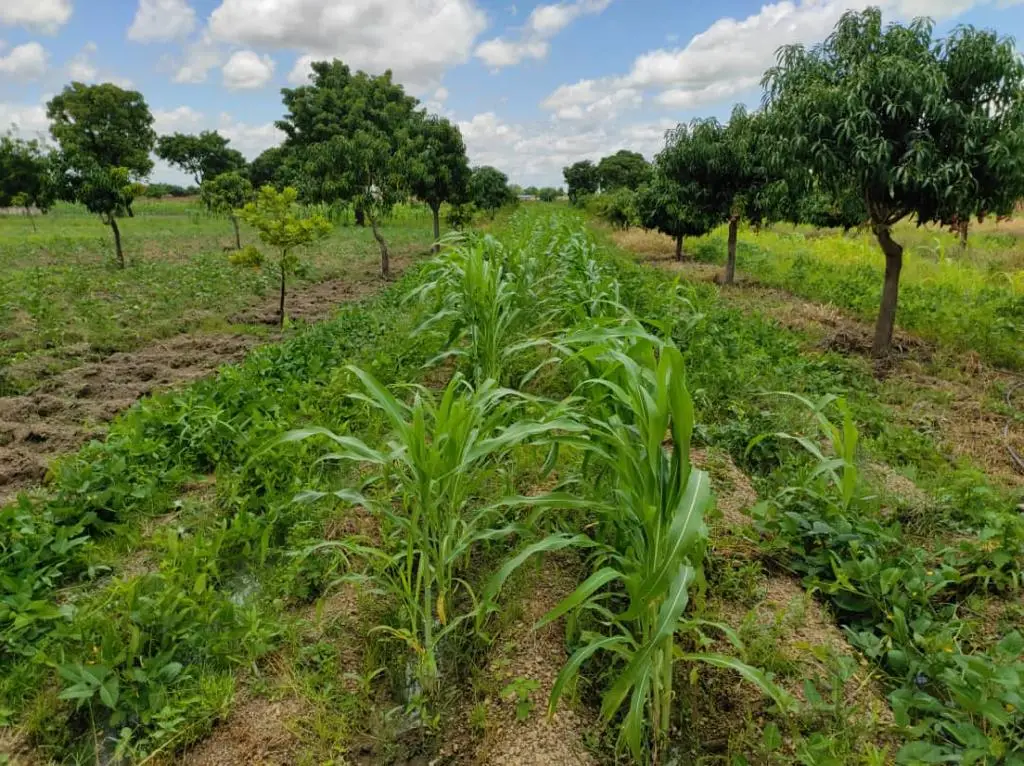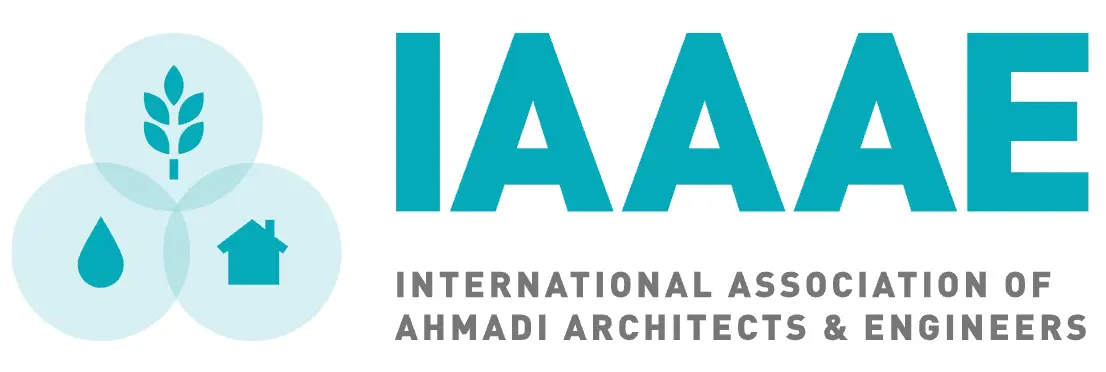Cultivating Prosperity: Sustainable Farms, Empowered Futures
MODEL FARM
The Model Farm Project is a strategic initiative by IAAAE to empower African smallholder farmers through sustainable, replicable farming models. It complements the work of the Model Village, Water for Life, and Alternative Energy projects, all rooted in the Ahmadiyya Muslim Community’s mission of selfless humanitarian service.
Objectives
Boost Productivity: Increase yields using sustainable farming techniques and affordable inputs.
Ensure Market Access: Help farmers connect with local markets to generate income.
Promote Sustainability: Reduce reliance on chemical fertilizers and prevent soil degradation.
Empower Communities: Provide farmers with training, tools, and resources to manage their farms as self-sustaining businesses.
🌍 Impact & Global Relevance
The project addresses core challenges in African agriculture — poor soil, low productivity, and lack of access to capital and markets — while contributing to:
SDG 1 – No Poverty
SDG 2 – Zero Hunger
SDG 13 – Climate Action
By equipping farmers to thrive independently, the Model Farm Project supports lasting rural development and strengthens food security in vulnerable regions.


Objectives of the Model Farm Project
The Model Farm Project aims to transform small-scale farming in Africa by addressing the root challenges farmers face and promoting long-term sustainability.
Core Goals
Enhance Productivity
Increase crop and livestock yields using climate-smart and sustainable farming methods — enabling more food and income from the same land.
Lower Input Costs
Provide affordable alternatives to expensive inputs like chemical fertilizers, making farming more accessible and resilient to economic pressures.
Improve Market Access
Connect farmers to local and regional markets, helping them sell more, earn better prices, and strengthen food security.
Promote Sustainability
Encourage practices such as agroforestry, organic composting, and crop rotation to build soil health, protect the environment, and adapt to climate change.
Break the Cycle of Poverty
Equip farmers with tools, training, and support to run profitable, self-sufficient farms — uplifting families and entire communities.
Strengthen Food Security
Boost local food production, reduce reliance on imports, and improve nutritional outcomes for millions in sub-Saharan Africa.
Key Components and Activities
The Model Farm Project applies a wide range of sustainable strategies tailored to the real-world challenges of smallholder farmers in Africa. While specific implementation details vary by location, the approach builds on proven agricultural practices and the IAAAE’s broader development mission.
Sustainable Farming Practices
Agroforestry & Crop Diversification
Integrating trees and varied crops to enrich soil, generate extra income (e.g. fruits, timber), and boost biodiversity.
Example: In Malawi, agroforestry increased yields on degraded land while reducing fertilizer needs.
Organic & Compost Fertilizers
Promoting compost and manure as affordable, natural alternatives to chemical fertilizers.
In West Africa, compost has boosted crop yields by up to 38% in climate-smart villages.
Climate-Smart Agriculture (CSA)
Introducing drought-tolerant crops, water-saving methods, and natural pest control to adapt to climate extremes like floods or droughts.
Soil Rehabilitation
Using cover crops and minimum tillage to restore degraded soils — addressing degradation on up to 51% of farmland in parts of East Africa.


Input Cost Reduction
Affordable Fertilizer Alternatives
Supporting the use of low-cost organic and small-dose inorganic fertilizers (microdosing) to relieve farmers from high input costs.
Improved Seed Access
Distributing high-yield, drought- and pest-resistant seeds suited to local conditions — both indigenous and hybrid.
Microdosing Techniques
Promoting efficient fertilizer use through small, targeted applications — a proven cost-saving method across sub-Saharan Africa.
Market Access & Economic Empowerment
Market Linkages
Connecting farmers to buyers via aggregation hubs, mobile pricing apps, and agribusiness partnerships.
Example: 1,300+ farmers now track real-time prices using digital tools (Farm Africa).
Value Addition
Training in post-harvest handling — such as drying, packaging, and processing — to increase product value.
Example: Ethiopia’s wild coffee project.
Access to Finance
Supporting microcredit, savings groups, and local lending schemes to invest in tools, seeds, and fertilizers.
Entrepreneurial Skills
Teaching farmers to manage their farms as businesses — fostering long-term growth and independence.
Capacity Building & Local Training
On-the-Ground Training
Offering hands-on learning through demo farms, field schools, and peer mentoring.
Example: Incentivized peer-led training improved adoption rates in Malawi (J-PAL).
Women & Youth Focus
Targeting programs for women (who grow 80% of crops in Africa) and youth to address inequality and unemployment.
Community Ownership
Empowering local communities to operate, maintain, and expand farm systems — ensuring sustainability beyond external support.
Innovation & Technology
Digital Agriculture
Providing farmers with mobile-based access to market data, weather alerts, and input advice.
Precision Farming
Exploring tools like sensors and drones to optimize input use — while recognizing access barriers in rural areas.
Mechanization
Introducing affordable tools (e.g. hand-held seeders or mini-tillers) to reduce labor and boost efficiency.
Why It Matters
The Model Farm Project is a blueprint for rural transformation — where skills, knowledge, and local empowerment replace dependency and poverty. Through scalable, replicable strategies, it supports:
SDG 1 – No Poverty
SDG 2 – Zero Hunger
SDG 13 – Climate Action


Impact and Significance
The Model Farm Project has the potential to transform African agriculture by addressing systemic challenges:
- Food Security: By increasing productivity, the project helps reduce Africa’s $114 billion agricultural import bill (projected to reach $510 billion by 2043) and feeds millions facing food insecurity, with 51 million in East Africa alone affected in 2025.
- Poverty Reduction: Higher incomes from improved yields and market access lift farmers out of poverty, where 700 million agricultural workers live on less than $1.90 daily.
- Environmental Sustainability: Sustainable practices like agroforestry and organic fertilization combat land degradation (affecting 22–51% of land in Kenya, Ethiopia, Malawi, and Tanzania) and reduce greenhouse gas emissions, which agriculture contributes 30% globally.
- Economic Empowerment: Transforming farms into businesses creates jobs and entrepreneurial opportunities, particularly for women and youth, aligning with models like Farm Africa’s NSSID program in Ethiopia, supporting 130,450 wheat farmers.
- Climate Resilience: Climate-smart techniques mitigate the impacts of droughts and floods, which displaced nearly a million people in East Africa in 2024.
“IAAAE is dedicated to empowering African farmers through sustainable agriculture, transforming struggling farms into thriving businesses for a more equitable future.”
